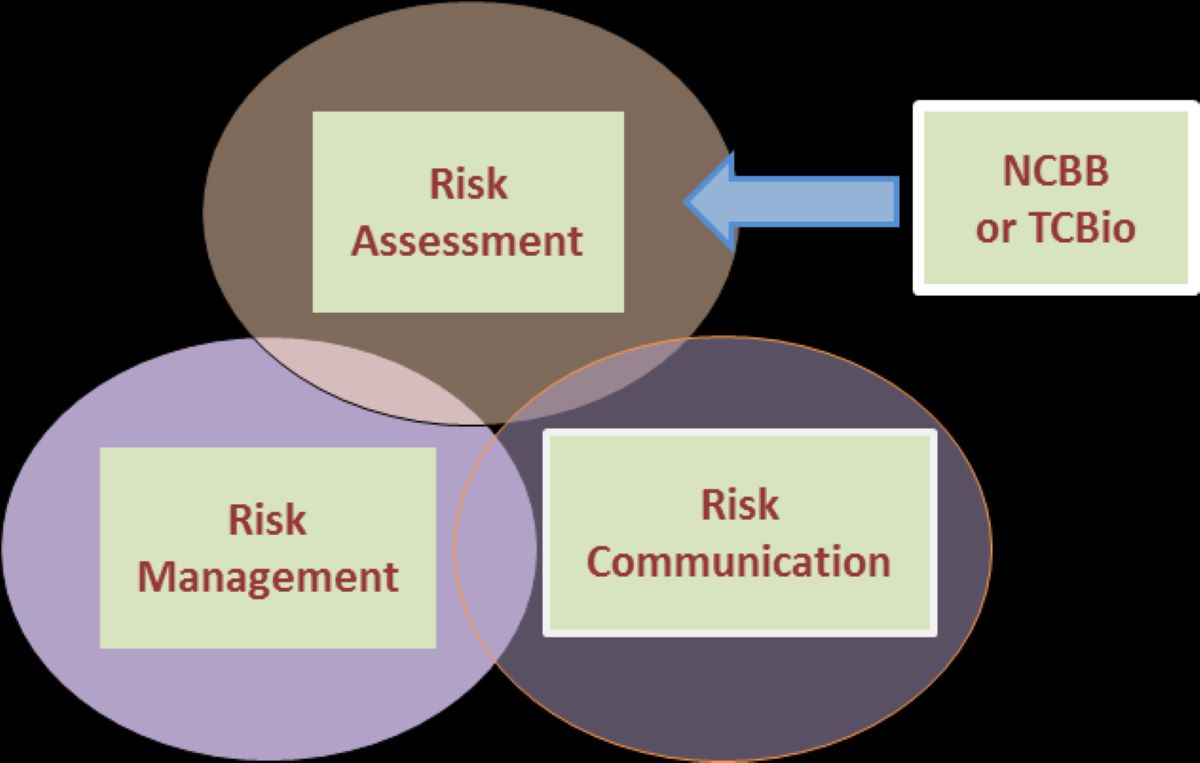

Finance
What Are The Three Cs Of Credit
Published: January 12, 2024
Learn about the three Cs of credit and how they impact your finance decisions. Understand the factors of character, capacity, and collateral that lenders consider before granting credit
(Many of the links in this article redirect to a specific reviewed product. Your purchase of these products through affiliate links helps to generate commission for LiveWell, at no extra cost. Learn more)
Table of Contents
Introduction
In the world of finance, credit plays a crucial role. Whether you’re applying for a loan, a credit card, or any other form of credit, lenders and financial institutions evaluate your creditworthiness to determine the risk of lending you money. A key aspect of this evaluation process is the Three Cs of Credit.
The Three Cs of Credit serve as a framework for assessing a borrower’s ability to repay a loan. They are Character, Capacity, and Capital. Lenders use these factors to make informed decisions about a borrower’s creditworthiness and to mitigate the risks associated with lending.
Understanding the Three Cs of Credit is essential for both borrowers and lenders. Borrowers can use this knowledge to ensure they meet the necessary requirements and improve their chances of obtaining credit. Lenders can use the Three Cs to evaluate borrowers’ creditworthiness and make informed lending decisions.
In this article, we will delve into each of the Three Cs of Credit, exploring what they mean and why they are vital considerations in the world of finance.
The Three Cs of Credit Explained
The Three Cs of Credit consist of Character, Capacity, and Capital. These factors provide lenders with a holistic view of a borrower’s creditworthiness and help evaluate the risk associated with lending money. Let’s dive deeper into each of the Three Cs:
- Character: Character refers to a borrower’s reputation and credit history. Lenders want to understand your track record of meeting financial obligations. They assess factors such as your payment history, credit score, and any past bankruptcies or defaults. A good credit history demonstrates reliability and responsibility, which increases your chances of obtaining credit at favorable terms.
- Capacity: Capacity focuses on a borrower’s ability to repay the loan. Lenders evaluate your income, employment stability, and debt-to-income ratio. They want to ensure that you have enough income to cover your existing financial obligations and comfortably repay the loan. A higher capacity indicates a lower risk for lenders, increasing the likelihood of credit approval.
- Capital: Capital refers to the financial assets and resources a borrower possesses. This includes savings, investments, and other tangible assets. Lenders consider capital as a safety net in the event of financial hardship. Having sufficient capital demonstrates financial stability, which reassures lenders and improves your creditworthiness.
By analyzing Character, Capacity, and Capital, lenders gain valuable insights into a borrower’s financial situation and their level of creditworthiness. However, it’s important to note that lenders may prioritize these factors differently based on the type of credit being applied for and the individual lender’s policies.
Character
Character is an essential aspect of the Three Cs of Credit, representing a borrower’s reputation and credit history. Lenders analyze your character to assess your level of responsibility and trustworthiness when it comes to repaying debts.
In evaluating character, lenders primarily consider your credit history and credit score. Your credit history provides a detailed record of your past borrowing and repayment behavior, including loans, credit cards, and other forms of credit. It shows how well you have managed your financial obligations and whether you have made timely payments.
A credit score is a numeric representation of your creditworthiness, usually ranging from 300 to 850. It is generated based on various factors, including your payment history, credit utilization, length of credit history, types of credit, and new credit applications. A higher credit score indicates a more positive credit history and increases your chances of obtaining credit on favorable terms.
Additionally, lenders may consider other factors related to character. This may include reviewing public records for any bankruptcies, foreclosures, or judgments against you. They may also look at your employment history and stability to gain insights into your reliability as a borrower.
Building a strong character in the eyes of lenders requires responsible financial habits. Paying bills on time, keeping credit card balances low, and avoiding excessive debt can all contribute to maintaining a positive credit history.
If you are new to credit or have had past credit challenges, you can take steps to improve your character. This includes establishing a credit history by opening a credit card or obtaining a small loan, making timely payments, and avoiding excessive debt. Over time, as you demonstrate responsible financial behavior, your character as a borrower will strengthen.
In summary, character is a crucial component of the Three Cs of Credit. Lenders rely on your credit history and credit score to assess your level of responsibility and determine whether you are a trustworthy borrower. Maintaining a positive credit history and striving to build a strong character can increase your chances of obtaining credit at favorable terms.
Capacity
Capacity is a fundamental factor in the Three Cs of Credit that focuses on a borrower’s ability to repay a loan. Lenders assess your capacity by evaluating your income, employment stability, and debt-to-income ratio.
When considering capacity, lenders want to ensure that you have a consistent and sufficient income to meet your financial obligations, including the proposed loan repayments. They analyze your income sources, such as employment, self-employment, investments, or rental income, to gauge the stability and reliability of your cash flow.
Lenders also consider your employment history, looking at factors such as job stability and career progression. If you have been with the same employer for an extended period, it demonstrates stability and may give lenders more confidence in your capacity to repay the loan. On the other hand, frequent job changes or periods of unemployment may raise concerns about your ability to generate a consistent income.
The debt-to-income ratio is another critical aspect of capacity. This ratio compares your total monthly debt obligations to your monthly income. Lenders use this ratio to assess your ability to manage additional debt. A lower debt-to-income ratio indicates better capacity to handle new monthly payments and increases your chances of getting approved for credit.
It’s important to note that lenders set specific guidelines regarding the maximum debt-to-income ratio they are willing to accept. Typically, a lower ratio is preferred as it signifies a lower risk for lenders.
If your capacity is currently low or close to the maximum limit, taking steps to improve it can enhance your chances of obtaining credit. This can include increasing your income through career advancement or earning additional sources of income. Reducing your existing debt by paying off outstanding balances can also have a positive impact on your capacity.
Overall, lenders evaluate your capacity to ensure that you have the financial capability to handle loan repayments. By having a stable income, a strong employment history, and a healthy debt-to-income ratio, you can improve your capacity and increase your creditworthiness.
Capital
The third component of the Three Cs of Credit is capital. Capital refers to the financial assets and resources that a borrower possesses. Lenders consider this factor to assess your financial stability and ability to withstand unexpected financial challenges.
When evaluating capital, lenders look at various aspects of your financial situation. These can include savings, investments, real estate holdings, and other tangible assets. Having a substantial amount of capital indicates that you have a financial cushion to rely on in case of emergencies or difficulties in repaying the loan.
Lenders also consider the liquidity of your capital. Liquid assets are those that can be easily converted into cash without significant loss in value. Examples of liquid assets include cash, savings accounts, and stocks. Having a good amount of liquid capital shows that you have immediate access to funds, further solidifying your financial stability.
In addition to assessing your capital, lenders may also evaluate the collateral you can provide for a secured loan. Collateral is an asset that you pledge as security for the loan. If you fail to repay the loan, the lender can seize the collateral to recover their losses. The value and type of collateral you can provide play a crucial role in the lender’s decision-making process.
Capital is particularly important for businesses seeking loans or credit. Lenders assess the capital structure of the business, including the owner’s equity, retained earnings, and other financial resources. A higher level of capital indicates a stronger financial position for the business and may lead to more favorable lending terms.
To improve your capital, you can focus on building your savings and investments. Regularly allocating funds towards savings and seeking opportunities for investment growth can demonstrate financial discipline and increase your capital base. Furthermore, maintaining a healthy balance between assets and liabilities can strengthen your financial position and support your creditworthiness.
Overall, capital serves as an essential factor for lenders to evaluate your financial stability and ability to weather unexpected financial challenges. By increasing your capital through savings, investments, and maintaining proper asset-liability balance, you enhance your chances of securing credit at favorable terms.
Importance of the Three Cs in Credit Evaluation
The Three Cs of Credit—Character, Capacity, and Capital—are of utmost importance in the evaluation of creditworthiness by lenders. These factors provide lenders with a comprehensive assessment of a borrower’s financial situation, risk level, and ability to repay a loan. Here’s why the Three Cs are essential in the credit evaluation process:
- Risk Mitigation: Lenders use the Three Cs to mitigate the risks associated with lending money. By analyzing a borrower’s character, lenders can gauge their credit history and repayment patterns, helping predict future behavior. Capacity evaluation ensures that the borrower has a reliable income source to make regular loan repayments. Capital assessment identifies whether the borrower has enough financial resources to handle unexpected circumstances. A thorough evaluation of these factors minimizes the risk of default and loss for the lender.
- Objective Decision-Making: The Three Cs provide lenders with an objective framework to evaluate borrowers. Rather than solely relying on subjective judgment, lenders can analyze concrete factors such as credit history, income stability, and asset ownership. This standardized approach ensures fairness in lending decisions, allowing lenders to assess the creditworthiness of borrowers consistently.
- Credit Access: For borrowers, understanding the Three Cs is crucial for accessing credit. By knowing what lenders look for, borrowers can take proactive steps to strengthen their character, capacity, and capital. This includes maintaining a positive credit history, improving income stability, and building financial assets. By enhancing these factors, borrowers increase their chances of qualifying for credit at favorable terms.
- Negotiating Power: The Three Cs have a direct impact on the terms and conditions of credit. Borrowers with a strong credit history, stable income, and significant assets have the advantage of negotiating lower interest rates, higher credit limits, and more flexible repayment terms. Lenders are more likely to offer favorable terms when they have confidence in the borrower’s creditworthiness based on the Three Cs.
- Lender’s Reputation: The Three Cs play a vital role in maintaining the reputation of lenders. By thoroughly evaluating character, capacity, and capital, lenders demonstrate their commitment to responsible lending practices. This helps maintain the integrity of the lending industry and builds trust with borrowers.
In summary, the Three Cs of Credit are crucial in credit evaluation as they provide a comprehensive and standardized framework for assessing the creditworthiness of borrowers. For lenders, the Three Cs help mitigate risks, make objective decisions, and maintain their reputation. For borrowers, understanding and strengthening the Three Cs can improve credit access, negotiate better terms, and enhance financial well-being.
Conclusion
The Three Cs of Credit, which include Character, Capacity, and Capital, serve as key factors in evaluating a borrower’s creditworthiness. Lenders rely on these factors to assess the risk associated with lending money and make informed decisions about extending credit.
Character, measured through a borrower’s credit history and credit score, provides insights into their past financial behavior and repayment patterns. Capacity evaluates a borrower’s ability to repay a loan based on factors such as income, employment stability, and debt-to-income ratio. Capital assesses the financial resources and assets a borrower possesses to handle unexpected financial circumstances.
Understanding the importance of the Three Cs in credit evaluation is essential for both borrowers and lenders. Borrowers can take proactive steps to maintain a positive credit history, improve income stability, and build assets to enhance their creditworthiness. Lenders can utilize the Three Cs to mitigate risks, ensure objective decision-making, and maintain their reputation as responsible lenders.
By recognizing the significance of the Three Cs, borrowers can increase their chances of accessing credit and negotiate favorable terms. Lenders can make informed lending decisions that align with their risk tolerance and lending guidelines.
In conclusion, the Three Cs of Credit provide a comprehensive framework for evaluating creditworthiness. They promote fair and objective lending practices while allowing borrowers to improve their financial standing. By considering the Three Cs, borrowers and lenders can build a strong foundation for successful credit relationships that benefit both parties.














